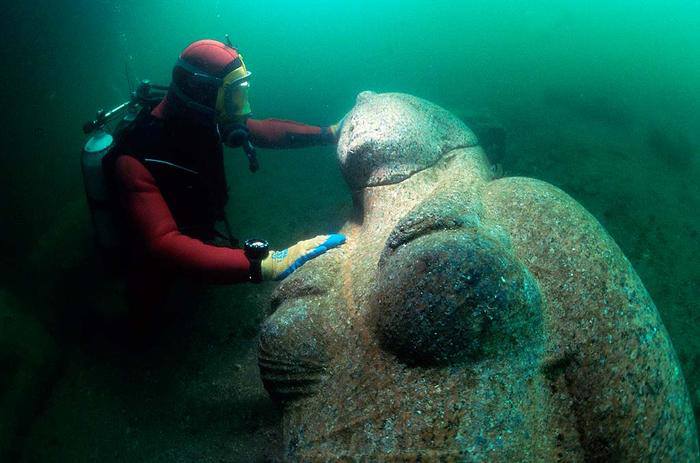British Museum unwraps Egypt's mysterious animal cults
The baboons, cats and crocodiles that enraptured ancient Egyptians are set to take centre stage in British cultural life with an unprecedented study and blockbuster exhibition of their mummified remains.
The little-studied animal mummies of the British Museum are to form the basis of an exhibition in its main galleries with an accompanying research project already shedding light on the mysterious animal cults and deifications that besotted humanity for millennia. Its holdings of roughly 400 animal mummies including cats, baboons and gazelles are being put through their first comprehensive survey with X-ray testing of all and the finest then sent to a London hospital for more revealing CT scanning.
The enormous scale of animal mummification in Egypt, dating from as early as 3000BC, and the association with the divine or sacred has only recently been grasped by scholars, helped by the discoveries of entire necropolises devoted to, for example, ibis and baboons.
Millions of animals ranging from elephants to shrews were interred annually at the peak of activity in the first millennium BC, with many receiving the same considered embalming and wrapping that high status humans would get.
Previous research has suggested that 98 per cent of the animal mummies so far discovered were votive offerings from, for example, pilgrims looking for favour from a particular deity.
Marie Vandenbeusch, a curator in the British Museum's Egypt and Sudan department, who is leading the research project, said the other 2 per cent were thought to have been "considered as representations of the gods".
Scanning of a 4-metre long mummified crocodile in the museum's collections has already revealed a pile of small stones in its stomach — which the reptiles use to help digestion — and the foreleg of a cow.
"This fits very well with the idea of that crocodile being a manifestation of God and living in a temple because if you look at offering tables to gods usually you have the foreleg of a cow," Vandenbeusch said.
"This crocodile was just living its life around the temple, died naturally and was then mummified."
The Apis bull, like the crocodile, was also considered to be a manifestation of God although well-preserved mummified examples have yet to emerge.
Archaeological excavations in recent years have uncovered evidence that "religious communities" of "sacred" baboons were given their own "cult enclosures" within human living environments. The huge demand for animal votive offerings is thought to have resulted in the creation of "puppy farms" to supply demand from ancient Egyptians with scholars also suspecting it contributed to the near-extinction of species including the sacred ibis.
Vandenbeusch said the "beauty of new technologies" including CT scanning was meaning that the museum could for the first time find out what was underneath the mummy wrappings.
"We have no idea what is going on," she said adding that the project would allow them to "better understand the collection, to do a proper documentation and conservation survey, to understand the chronology of when they were produced" as well as which textiles, dyes, embalming agents and decorative patterns were deployed.
"But at another level it is really about the people behind it," she added.
"The big picture is why all those animals were bred, killed and mummified and what is the reasoning behind that and how did it impact the Egyptian society. There are a lot of questions that remain unanswered."
Some animal mummies were interred with humans which scholars suspect may be because they were beloved pets or just a source of food for the afterlife. Other more "exotic" animals such as leopards and elephants may have been part of "royal menageries" with owners collecting them as "trophies".
In its introduction to the project the museum said "surprising little is known about the history of mummifying animals, the lives of the animals themselves, and what they can tell us about changing beliefs in ancient Egypt" adding that its collection, one of the largest in the world, could shed light on the mysteries.
It said it aimed to "change our understanding of the history of mummifying animals in Egypt and the lives of the animals that were mummified".
Vandenbeusch said the starting X-rays of the project had already cast doubt on what was underneath the mummy wrappings. "I know that some labels need to be changed," she said. "What is inside is not what it says on the label."
The exhibition is due to open in the museum's large Sainsbury gallery in autumn 2026.
-- Sent from my Linux system.
















